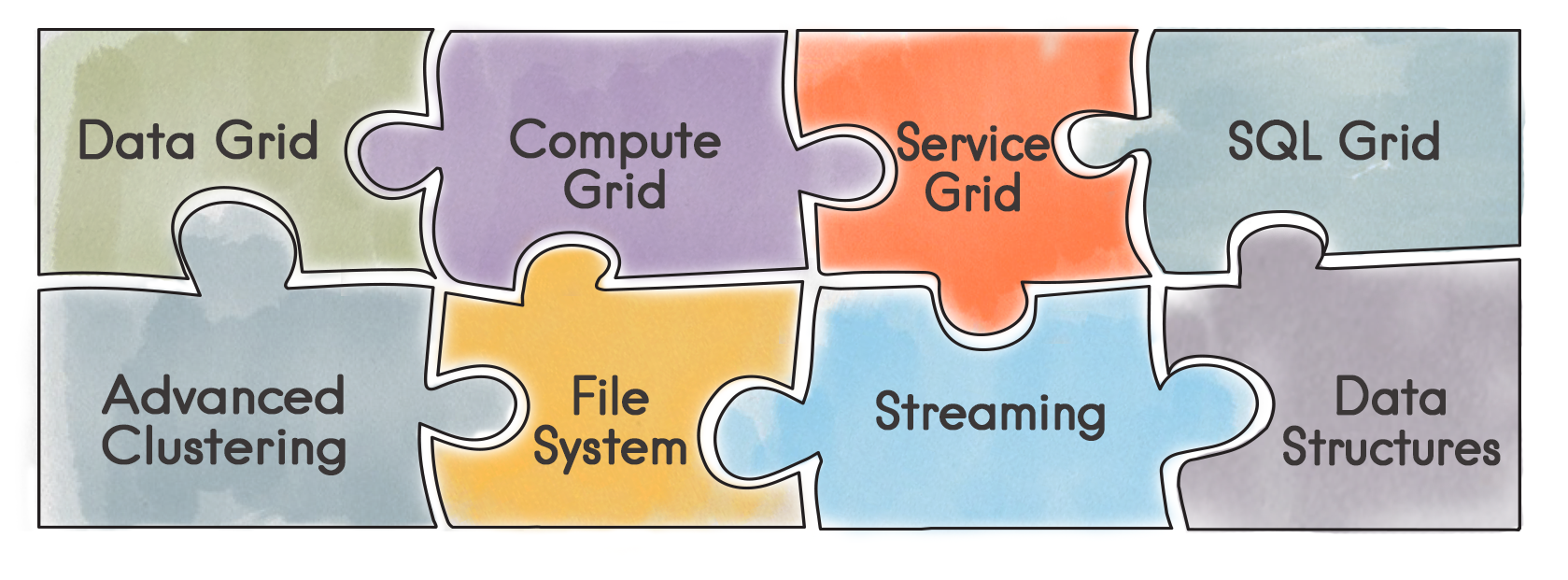Ignite
Since Camel 2.17
Apache Ignite In-Memory Data Fabric is a high performance, integrated and distributed in-memory platform for computing and transacting on large-scale data sets in real-time, orders of magnitude faster than possible with traditional disk-based or flash technologies. It is designed to deliver uncompromised performance for a wide set of in-memory computing use cases from high-performance computing, to the industry’s most advanced data grid, highly available service grid, and streaming. See all features.

Ignite components
See the following for usage of each component:
- Ignite Cache
-
Perform cache operations on an Ignite cache or consume changes from a continuous query.
- Ignite Compute
-
Run compute operations on an Ignite cluster.
- Ignite Events
-
Receive events from an Ignite cluster by creating a local event listener.
- Ignite ID Generator
-
Interact with Ignite Atomic Sequences and ID Generators .
- Ignite Messaging
-
Send and receive messages from an Ignite topic.
- Ignite Queues
-
Interact with Ignite Queue data structures.
- Ignite Sets
-
Interact with Ignite Set data structures.
Installation
To use this component, add the following dependency to your pom.xml:
<dependency>
<groupId>org.apache.camel</groupId>
<artifactId>camel-ignite</artifactId>
<version>${camel.version}</version> <!-- use the same version as your Camel core version -->
</dependency>Initializing the Ignite component
Each instance of the Ignite component is associated with an underlying org.apache.ignite.Ignite instance.
You can interact with two Ignite clusters by initializing two instances of the Ignite component and binding them to different IgniteConfigurations.
There are three ways to initialize the Ignite component:
-
By passing in an existing
org.apache.ignite.Igniteinstance. Here’s an example using Spring config:
<bean name="ignite" class="org.apache.camel.component.ignite.IgniteComponent">
<property name="ignite" ref="ignite" />
</bean>-
By passing in an IgniteConfiguration, either constructed programmatically or through inversion of control (e.g., Spring, etc). Here’s an example using Spring config:
<bean name="ignite" class="org.apache.camel.component.ignite.IgniteComponent">
<property name="igniteConfiguration">
<bean class="org.apache.ignite.configuration.IgniteConfiguration">
[...]
</bean>
</property>
</bean>-
By passing in a URL, InputStream or String URL to a Spring-based configuration file. In all three cases, you inject them in the same property called configurationResource. Here’s an example using Spring config:
<bean name="ignite" class="org.apache.camel.component.ignite.IgniteComponent">
<property name="configurationResource" value="file:[...]/ignite-config.xml" />
</bean>Additionally, if using Camel programmatically, there are several convenience static methods in IgniteComponent that return a component out of these configuration options:
-
IgniteComponent#fromIgnite(Ignite) -
IgniteComponent#fromConfiguration(IgniteConfiguration) -
IgniteComponent#fromInputStream(InputStream) -
IgniteComponent#fromUrl(URL) -
IgniteComponent#fromLocation(String)
You may use those methods to quickly create an IgniteComponent with your chosen configuration technique.
General options
All endpoints share the following options:
| Option | Type | Default value | Description | propagateIncomingBodyIfNoReturnValue | boolean |
|---|---|---|---|---|---|
true |
If the underlying Ignite operation returns void (no return type), this flag determines whether the producer will copy the IN body into the OUT body. |
treatCollectionsAsCacheObjects |
boolean |
false |
Some Ignite operations can deal with multiple elements at once, if passed a Collection. Enabling this option will treat Collections as a single object, invoking the operation variant for cardinality 1. |
Unresolved include directive in modules/ROOT/pages/ignite-summary.adoc - include::spring-boot:partial$starter.adoc[]